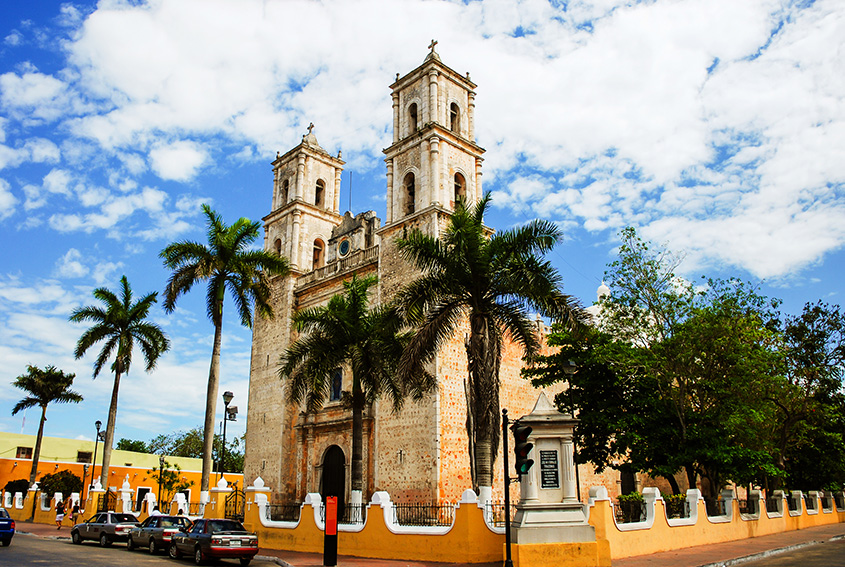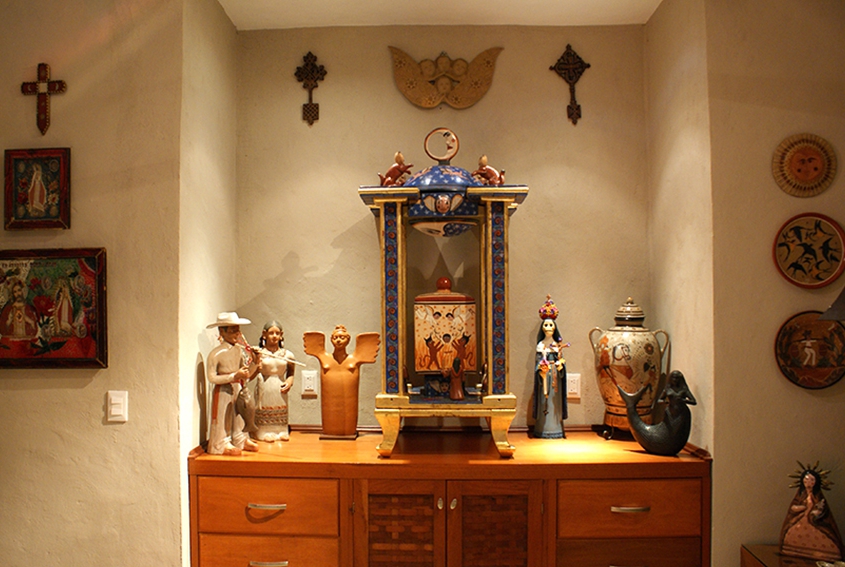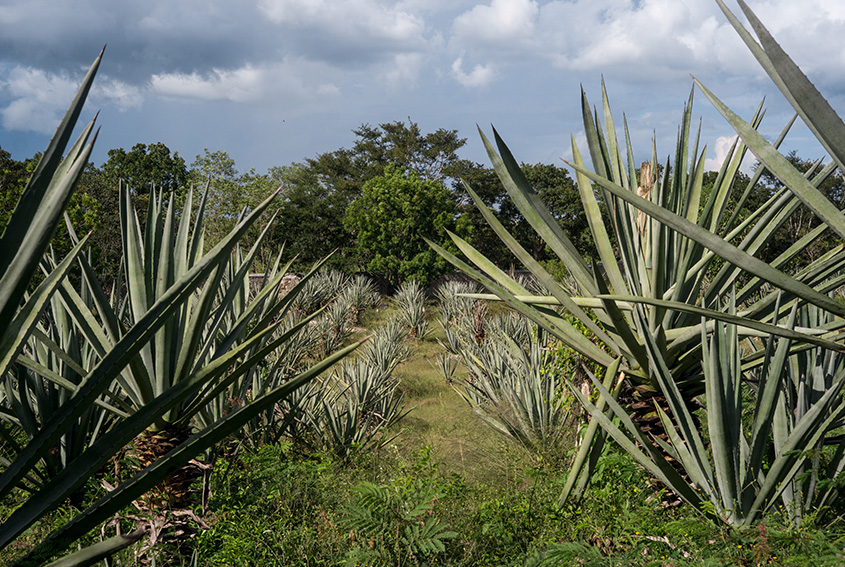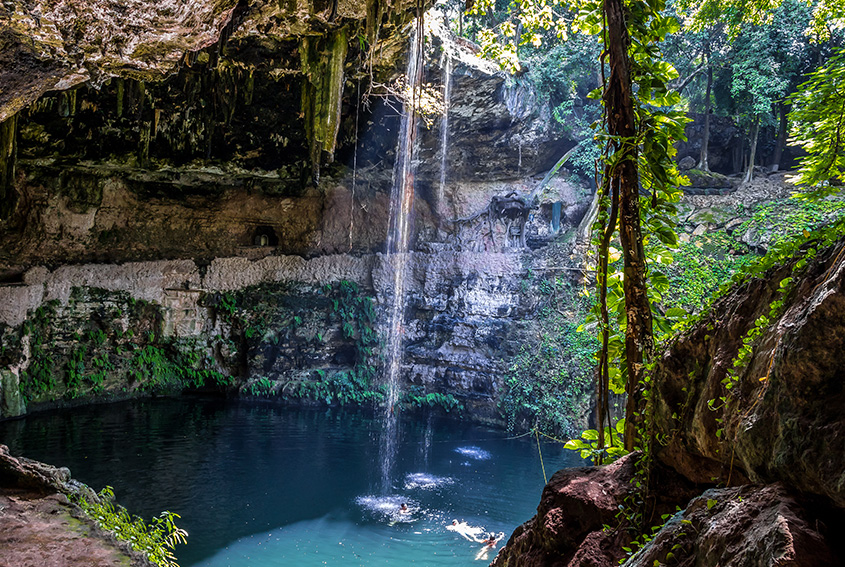A Touch of Old Mexico: Valladolid
Have you visited the colonial town of Valladolid in eastern Yucatán, a tranquil community full of history and traditions? Only an hour and a half’s drive from Cancun, it might be a world away. Gracious old churches and restored mansions that date from the 16th and 17th centuries, the tree-lined main square that plays host to evening concerts and dance performances at the weekend, the mystery of a deep cenote in the heart of town… it has plenty of attractions in its own right and is the perfect base for exploring the area. The archaeological sites of Ek Balam and Chichen Itza are a short drive away, there are countless cenotes and caves to discover, timeless Mayan communities to visit and the Rio Lagartos Biosphere Reserve on the Gulf Coast is home to thousands of flamingos and other birds.
The Main Square
Stroll through the main square dominated by the early 18th century San Servasio Cathedral and City Hall where the second-floor balcony has an exhibition of paintings by Marco Lizama depicting the history of Valladolid. There’s more history on display in the small San Roque Museum behind City Hall.
Sit in the park with an ice cream and soak up the peaceful ambiance. On Sundays, the square plays host to the Domingos Vallesolitanas event featuring a craft market, live music and folk dancing. On Sunday evening, a band strikes up for danzon and cha cha cha rhythms and local couples and visitors take to the dance floor.
Just a short stroll away from the main square, the six barrios or neighborhoods such as Candelaria and Santa Lucia are also worth visiting.
The world of Mexican folk art
Shop for embroidered cotton dresses made in the Yucatan and a colorful selection of textiles from Chiapas, Hidalgo and Oaxaca in shops lining the main square and surrounding streets. There are carved alebrije figures, ceramics, hammocks, leather, locally made gold filigree jewelry and other Mexican handicrafts to tempt you.
If you would like to see more Mexican marvels, Valladolid has two enchanting locations for you to visit.
Located at Calle 40, a short walk from the main square is Casa de los Venados or the “House of the Deer,” a 17th-century private residence with a collection of ceramics, textiles and figurines that pays tribute to the rich tradition of Mexican folk art.
Casa de los Venados is an impressive casona or hacienda-style house built between 1600 and 1620. During the Colonial period, it was the home of the Alcalde or Mayor and later to a prominent Valladolid family.
Abandoned since 1964 and crumbling into ruin, it was purchased by American couple and former Royal Resorts members John and Dorianne Venator who embarked on a 10-year restoration project.
In addition to being a private home, Casa de los Venados houses a huge collection of Mexican folk and contemporary art, the reflection of a lifelong passion.
John Venator started collecting Mexican folk art in 1963 when he visited Puebla on a student exchange program and since then he and his wife have traveled the length and breadth of the country, visiting artisans in remote villages in search of pottery, carvings, textiles, metal work and more.
More than 3,000 pieces ranging from giant trees of life, ceramic jaguars and carved masks to Day of the Dead art, Frida Kahlo-inspired tiles and chairs, traditional wooden furniture and murals by local artists are exhibited throughout the house. Everywhere you look there is art, and every exquisite object tells a story. Talavera vases, brocaded textiles from Chiapas and glazed green ceramic pineapples from Michoacan share space with miniature hand-painted figures in traditional dress, beaten copper dishes, Mata Ortiz pottery from Chihuahua and award-winning piñatas. It is one of the most extensive collections of folk art in private hands, and a joyous celebration of the creativity, color and humor of the country’s artisans.
Guided tours of Casa de los Venados and its collection are available at 10 a.m. (Valladolid time) and take around one hour. Visitors are asked to give a donation to the owners’ charitable foundation to support local causes such as a clinic and community health programs, education and the arts in Valladolid.
Located in front of San Juan Park, the Mexican Ethic Clothing Museum or MUREM is worth a visit if you are interested in Mexican traditional garb. It is a fascinating introduction to a colorful world of clothing worn by indigenous groups in different parts of the country.
Embroidered designs full of symbolism that celebrate nature and ancient beliefs from Chiapas, Oaxaca and Yucatán among others; huipiles or dresses, sashes, capes and shirts worn in daily life and for festivals; ceremonial wooden masks and more are on display. Bilingual guides are on hand to tell you the story of each garment and point out the different design elements used by the weaver or seamstress.
The Museum is open daily from 10 a.m. to 6 p.m., admission is a donation.
Walk through history
Stroll along Calzada de Los Frailes, a pedestrian-only street linking the center of town with San Bernardino Church and Sisal Convent. During your walk, you can shop for arts and crafts and sample Yucatecan cuisine at La Casona, another colonial mansion that was restored by the Xcaret Group.
Nestled in the garden at La Casona, the shrine and fountain dedicated to Valladolid’s patron saint, the Virgin of the Candelaria is a work of art. Created by five Xcaret craftsmen using Talavera ceramics, it took almost a year to assemble and five more months to install in Valladolid. Inspired by the floral designs of a Yucatecan dress, it depicts the Virgin and Saint Bernardino of Siena, Saint Lucia, Saint Servacio and Saint John, who are also honored in Valladolid.
On Calzada de Los Frailes you can also watch cacao beans being ground to make chocolate using traditional techniques or call in at a perfumery which is full of the fragrance of native herbs and flowers. Be sure to sample some locally made xtabentún, a liqueur made from honey, a native flower, and a hint of aniseed, and buy some honey to take home. The Maya have been beekeepers since time immemorial and Yucatán honey is some of the finest in the world.
Founded by the Franciscan order in 1552, San Bernardino Church and Sisal Convent is a sprawling fortress-like complex that was the center of its missionary work with Mayan communities in the eastern Yucatán. It sits above an underground river called Sis-Há (cold water in Maya) and has a network of tunnels leading away toward the city, which were used in times of strife. The church is sober in design and has an interesting altarpiece and several retablos of the saints.
The story goes that the 17th-century pirate Lorenzillo, the scourge of the port of Campeche, came to Valladolid in search of a girl he had fallen in love with. He was captured and imprisoned in the monastery. As he awaited execution, his crew sprang him from prison in a daring raid on the town.
Mayapan Distillery
On the outskirts of Valladolid, the stiff grey-green spikes of the native henequen plants mingle with fields of blue agave, the plant that has given the western state of Jalisco such fame as the source of tequila.
Several years ago, a local rancher and businessman planted the blue agave on his land and the plants are now being harvested and processed to produce a spirit that resembles tequila. You can see every step of the artisanal production process at the Mayapan distillery, which uses techniques used for over 400 years.
While Mayapan cannot be called tequila because the denomination of origin trademark is only reserved for spirits produced in Jalisco, its origin, it does have the characteristic smoky taste and is available in blanco, reposado and añejado. You’ll be able to taste this award-winning spirit at the end of the tour and purchase a bottle, or local honey, crafts, and a selection of tequilas and mescals in the distillery shop. Mayapan is open from 9 a.m. to 6 p.m., closed on Sundays.
Mysterious Natural Wells
Eastern Yucatán is peppered with cenotes and caves, each one different, all with an air of mystery. Start your cenote tour at the huge Zaci Cenote in the heart of Valladolid on Calle 36. Surrounded by ceiba, cedar, palm, wild fig and breadnut trees, this is a massive 80-meter-deep sinkhole similar to the Sacred Well in Chichén Itzá, with a winding stone staircase leading down into the cave. Steep walls festooned with jungle vines and tree roots tumble down into the turquoise depths of a clear pool and swallows circle endlessly, skimming the surface of the water to catch insects.
Just outside town are Dzitnup and Samula cenotes, the Yucatan’s most famous cenotes; Hubikú in nearby Temozón is also worth a stop for a refreshing dip and lunch and there are many more to visit.
A new cenote park will soon be opening in the Valladolid area. Called Xibalbá, a reference to the Maya Underworld, it comprises eight different cenotes to visit and experiences such as ziplining, kayaking, nature trails and more.
Discover Valladolid and Eastern Yucatan with Thomas More Travel
Contact Thomas More Travel to arrange a trip to Valladolid and explore the eastern Yucatan.





